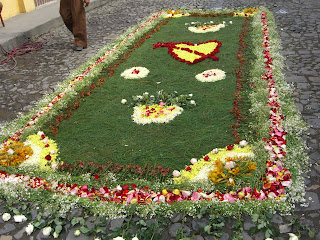Brian stayed in Arizona, where he worked in construction. A couple of years later, Brian married a Guatemalan woman who was a legal permanent resident of the US. He and his wife had two children together. In search of a better life, they moved to Utah, where Brian converted to Mormonism. His wife was already a Mormon. In Utah, they had a third child. Despite his marriage to a legal permanent resident and their three citizen children, Brian was not able to legalize his status in the US. As the years went by, he worried less and less about his illegal status. In Utah, he was able to get a driver’s license, and things seemed to be going well for them.
 Early one morning in July 2009, ICE agents knocked on Brian’s door and asked for him. They had a warrant for his arrest. Because of his 1997 deportation order, Brian was what ICE calls a “fugitive alien.” Brian had never gotten in any trouble with the police, nor had anyone in his family. Nevertheless, he had a deportation order, and that was sufficient cause for ICE agents to come to his home, arrest him, and deport him seven days later.
Early one morning in July 2009, ICE agents knocked on Brian’s door and asked for him. They had a warrant for his arrest. Because of his 1997 deportation order, Brian was what ICE calls a “fugitive alien.” Brian had never gotten in any trouble with the police, nor had anyone in his family. Nevertheless, he had a deportation order, and that was sufficient cause for ICE agents to come to his home, arrest him, and deport him seven days later.In those seven days, Brian had no opportunity to see an immigration judge, to secure an immigration lawyer, or to contest his case in any way. He told me he refused to sign his deportation order, as he wanted to apply for cancellation of removal. His refusal to sign did not stop ICE from putting him on a plane back to Guatemala.
Brian’s arrest occurred in the course of a home raid. These raids typically are conducted very early in the morning, when most occupants are sleeping. Several ICE agents surround a house and knock on the door and windows. If the occupant opens the door, the agents may enter the home, frequently without properly identifying themselves or gaining the consent of the occupant. In Brian’s case, the agents asked about the other members of the house, yet Brian told them that they were all citizens or legal permanent residents, and the ICE agents did not enter the house. This is fortunate, as Brian’s children did not have to witness their father being taken away in shackles.
This home raid was part of the National Fugitive Operations Program (NFOP), an initiative led by Immigration and Customs Enforcement (ICE) that has come under harsh criticism for its inefficacy. NFOP is intended to enhance national security by finding and deporting dangerous “fugitive aliens.” A “fugitive alien” is a non-citizen who has been ordered deported, yet has not left the country or reported to DHS. The budget of this program has increased dramatically since its inception in 2003 – from $9 million to $218 million in FY 2008. A recent report by the Migration Policy Institute criticizes NFOP, primarily because of its failure to arrest dangerous fugitives – “NFOP has failed to focus its resources on the priorities Congress intended when it authorized the program. In effect, NFOP has succeeded in apprehending the easiest targets, not the most dangerous fugitives” (Mendelson, Strom and Wishnie 2009: 2).
Although NFOP is designed to deport dangerous criminals, nearly three-quarters of the people they apprehended through February 2008 had no criminal records. In 2007, NFOP, with a $183 million budget, arrested only 672 fugitive aliens that ICE considered to be dangerous. The other 30,000 people arrested were people with deportation orders (15,646), undocumented migrants (12,084) or non-citizens who had been convicted of non-violent crimes, such as shoplifting (2,005). Mendelson et al of the Migration Policy Institute point out that “the number of fugitive aliens with criminal convictions arrested … remained relatively constant between FY 2004 and FY 2008. Congressional allocations to NFOP, by contrast, grew 17-fold over the same period” (2009: 15).
NFOP has been given the money and the authority by Congress to search homes for dangerous criminal fugitive aliens that threaten national security. Brian was one of those fugitive aliens, and that is why he was deported, even though he is married to a legal permanent resident, has three US citizen children, and his only crime was crossing the border illegally in 1997. It is easy to make the case that Brian did not have the legal right to remain in the US. That he presented a threat to national security, however, is a hard case to make.
Although it might seem perfectly reasonable to some people that ICE does its job by entering people’s homes and removing undocumented migrants, in reality, it is a tremendous waste of resources. Each team of ICE agents generally can only do about one raid a day, as they are always early in the morning. On a good day, they might find as many undocumented migrants as there are ICE agents. Most days, however, they will find one or two. There are only 104 Fugitive Operation Teams currently in the US. To use one of these 104 teams to find and deport a person like Brian is a tremendous waste of resources.







